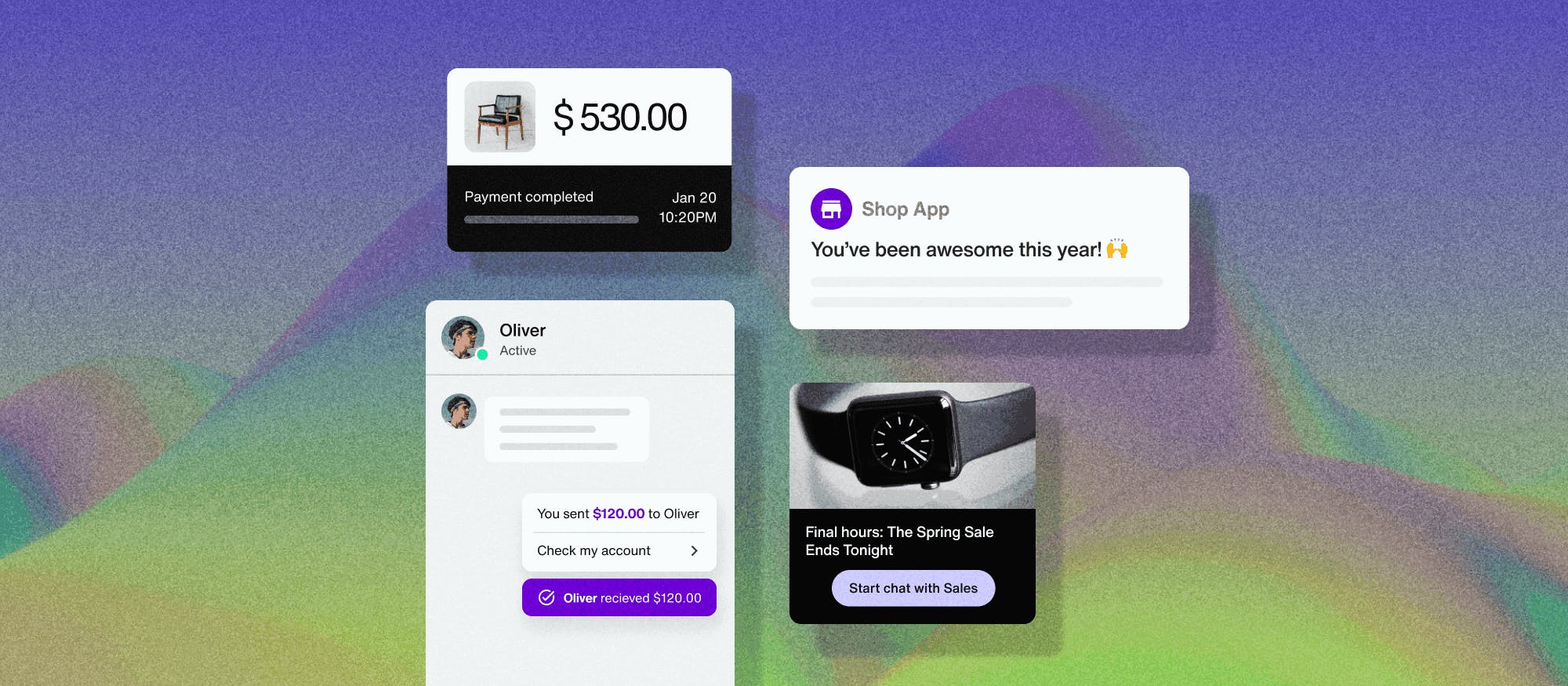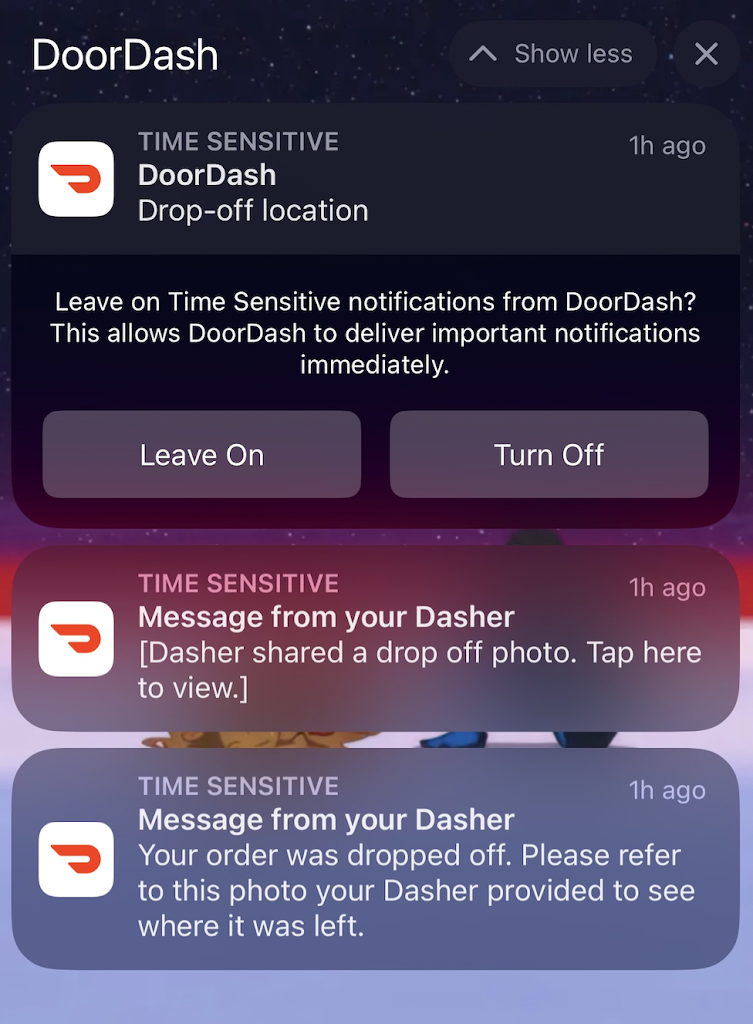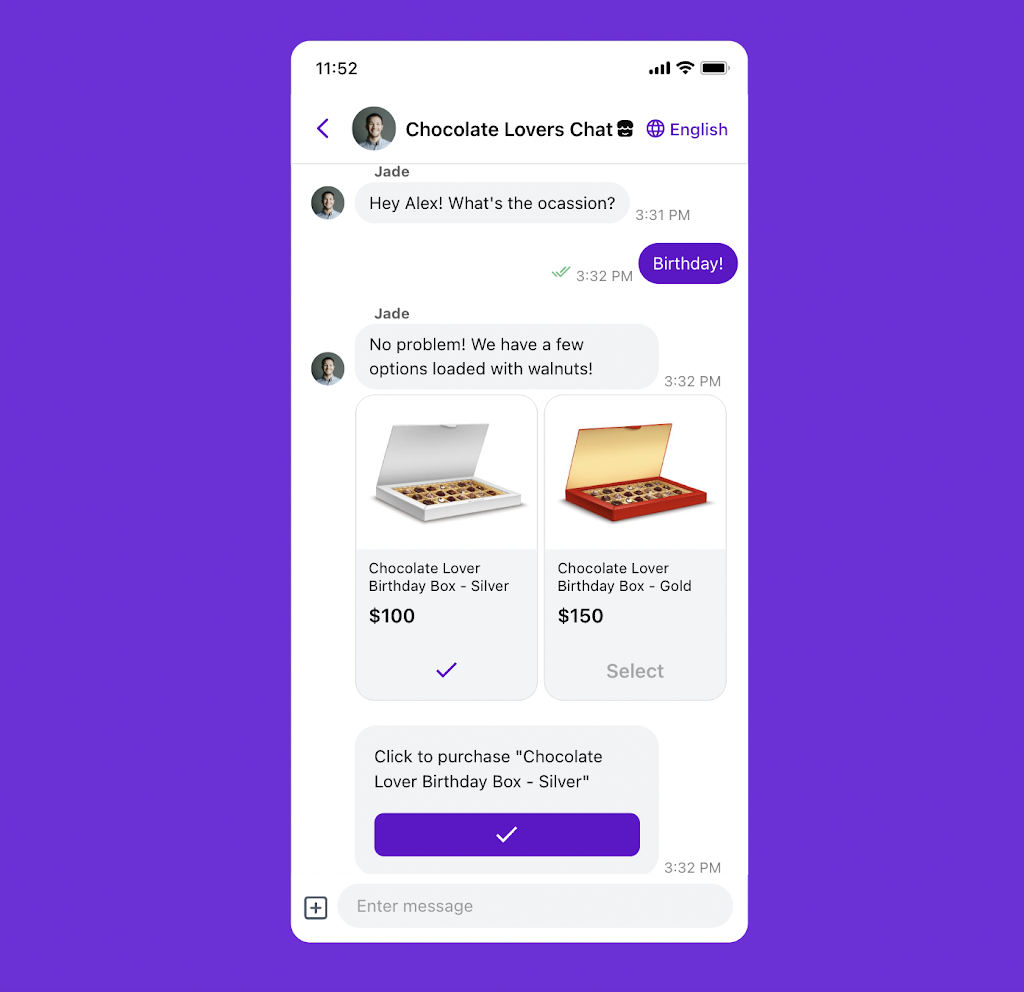What transactional in-app messages can do for your business

In 2024, mobile retail e-commerce sales are projected to surpass 534 billion U.S. dollars. Yet, mobile conversion rates are still lower than website conversions.
One way to increase your mobile conversion rate is by sending transactional in-app messages that guide customers toward a purchase. By providing an opportunity to engage with your business, you’re allowing for a customer relationship to start taking place.
Transactional messages are the ones that complete a purchase or another action — the confirmation emails, product suggestions, shipping notifications, receipts, and so on.
In this post, we'll look at what transactional messages are, the difference between transactional and promotional messages, and some best practices for using them effectively.
What are transactional messages?
Transactional messages help businesses keep customers up-to-date on any changes that may occur regarding orders, payments, shipping status updates, and privacy policy updates. They are a great way for businesses to demonstrate commitment to customer service while streamlining effortless communication between companies and their customers.
Transactional messages can come through text or SMS messages, email, push notifications or through in-app messaging, notifying about a purchase or other updates.
However, with in-app messaging, customers can be personally guided through their transactions without ever leaving the app.
| Channel | Pro | Con |
| SMS | Deliverability | Scams, no rich media |
| Email | Rich media, easy to reference | Speed |
| Push notifications | Speed | Fleeting |
| In-app messaging | Speed, contextual, immediately actionable, referenceable | Requires dedicated app |
Different types of common transactional messages:
Delivery notifications let customers know the status of their purchase or order, and provide tracking information, often facilitated by order tracking software.
Order confirmations are typically sent out immediately after a purchase is made, providing all the details on what has been purchased including pricing, delivery address, the order number, and other information.
Payment reminders can be sent to prompt customers when payments are due, while account activation emails are typically used once an account has been created by a customer, in order to verify the email address linked to it.
Payment update reminders can alert customers when their credit card information is out of date.
Multi-factor authentication messages and password reset emails help users with logging in.
Double opt-in emails provide the next steps when someone signs up.
Welcome emails for new subscribers and account creation messages are sent to confirm success.
Cancellation notifications can confirm when someone pulls out of a purchase or clicks an unsubscribe link.
Receipts provide the customer with a record of their purchase and may also include any applicable coupons or discounts they have received.
Customer feedback emails and in-app surveys collect valuable feedback from customers, and make them feel heard.
Most transactional messages are sent via automations, and are based on templates. That said, some small businesses send transactional emails and notifications by hand.

Communicate seamlessly with buyers.
Transactional vs. promotional messaging
Two types of messages are essential when communicating with customers: transactional and promotional messages.
Promotional messages relay specific marketing content to an individual or group of people, to inform them about deals, promotions, sales, announcements, and so on.
Examples of promotional messaging include:
Content marketing emails, such as newsletters
Push notifications that highlight current offers
In-app messages that encourage subscription upgrades
Multiple types of promotional messaging can be deployed successfully within a unified marketing strategy.
Both transactional and promotional messages have their place in any wider communication strategy. It's important for businesses to understand when to use each type of message for maximum impact on their customers and their engagements.
How to write effective transactional messages
Transactional messaging, in all its many forms, should be concise and focused. The main goal should always be to inspire customers to take action.
Craft your message with the same urgency as a sales or promotional news; lead people to purchase or sign up for additional offers or services. Focus on adding powerful images that catch people's attention and helpful links that provide further value and guidance. For example, you could attach a picture of the receipt to order confirmation emails, along with the original file. The more personalized and valuable your messaging, the more you will build loyalty among customers, even after purchase.
Transactional messages can have different purposes, as well. Are you informing a customer of their account status? Sending them a notification about their package being delivered?
Each step of the customer journey should include some sort of message, even if it's as simple as a push notification. This is an effective way to prove to customers that you're thinking about them every step of the way.
Adding a CTA (call to action) to transactional messages makes them more powerful again. For instance, cart abandonment emails can include a direct link to your checkout page.
Transactional messaging inspiration and examples

Delivery notifications are transactional, or operational, messages that alert the user that their delivery is on the way, completed, or delayed. With a messaging feature, customers can communicate directly with their driver in a secure way.

Combining suggested messages with SendBird’s chat layer, Carousell is able to drive faster conversations and successful transactions, leading to much faster responses and a better experience.
Porter driver updates
Not all transactional notifications are customer facing. Porter, one of India's leading logistics companies, uses Sendbird technology to send delivery updates to drivers via persistent notifications.
This system ensures that drivers can’t miss key information.
Society6 abandoned cart emails
One type of transactional email is the abandoned cart notification sent out by online art marketplace, Society6.
These automated emails tell recipients that their chosen products have been reserved, and they provide a link to the shopping cart page. Society6 also adds a promotional twist by offering to reduce the price if the purchase is completed within 48 hours.
PRC trial ending reminders
Another example of a transactional email is the message sent by PRC to customers who come to the end of a free trial.
These emails remind users of all the functionality they can unlock by signing up for a paid account, boosting conversions.The messages are accompanied by a subject line that urges recipients to take action.
Skyscanner price alert notifications
Travel comparison site, Skyscanner, allows users to track the price of specific flights. The app delivers the news via a short-and-sweet notification when there's a change. Users can tap this to book and get more information.
Combining transactional and promotional messaging
The primary objective of transactional messaging is to guide users through processes and toward positive endpoints. In turn, this tends to lead to increased sales and happier customers.
However, many companies are now going one step further by enhancing transactional communication with promotional content.
This approach is often more effective than sending promotional content separately because transactional messages see higher open rates and engagement.
Striking the right balance between operational and promotional content can be tricky, so it’s worth studying real-world examples.
Promotional notifications
As with transactional communication, there is some overlap between promotional messages and notifications.
Messages are delivered in-app, via email, or through SMS. In contrast, promotional notifications come in the form of push notifications, whether that is on mobile or desktop devices.
Examples of promotional notifications and messages
KAVECON K-pop engagement
This live music streaming platform uses in-app messaging to engage with users and promote upcoming shows.
Powered by the Sendbird Chat API, the app allows fans to talk with artists and each other. KAVECON then builds on this excitement with promotional messages about upcoming performances and “meet and greet” events.
Shein welcome notifications
When new user signs up with Shein or downloads the app, they are welcomed with a notification that invites them to start shopping.
1mg customer support upsells
Customer support might seem purely transactional — but 1mg proves otherwise. This online pharmacy allows users to ask questions and get help via in-app messaging powered by Sendbird.
Agents can deliver promotional content during these conversations, such as pointing users toward upselling opportunities.
Lyft end-of-day notifications
At the end of a working day, the Lyft app will sometimes compliment users on their productivity and suggest a ride home. These timely notifications are well-placed to encourage sales.
Amazon product recommendations
Amazon's order and shipping confirmation emails always contain product recommendations based on the most recent purchase.
This type of email message usually promotes cross-selling, but Amazon sometimes suggests repeat purchases.
Macy’s double opt-in promotions
Double opt-ins from Macy’s also serve as promotional email campaigns.
Customers are encouraged to confirm their addition to the company email list, and are rewarded with a discount on their next purchase.
Engage your users with messaging
From social media marketplaces to healthcare service providers, transactional messaging can significantly build engagement and encourage future conversions.
Integrating transactional messaging with marketing campaigns can enhance these benefits, leading to upsells and better user retention.
Sendbird makes it easy to implement both types of messaging. Our Chat API allows you to integrate messaging features in a matter of hours, while our Notifications solution helps to capture the attention of users.
Speak to our sales team today to discover what Sendbird could do for your business.










